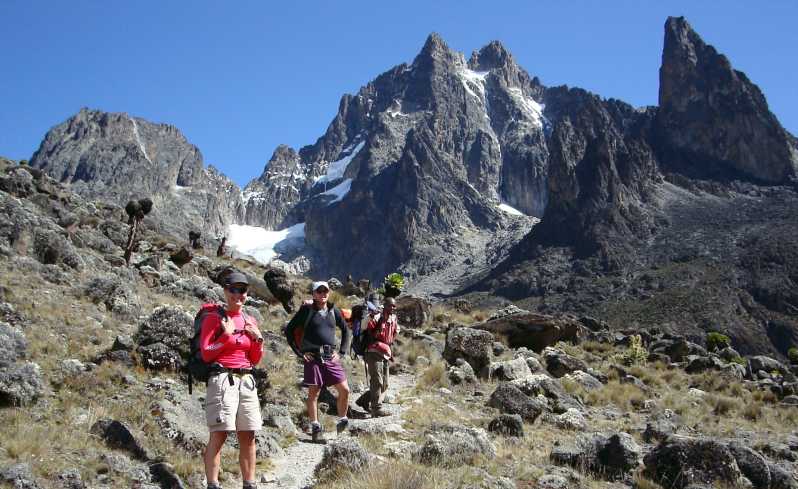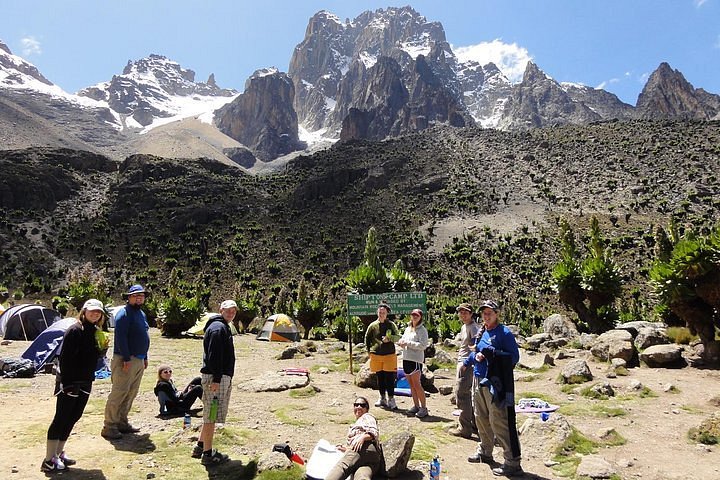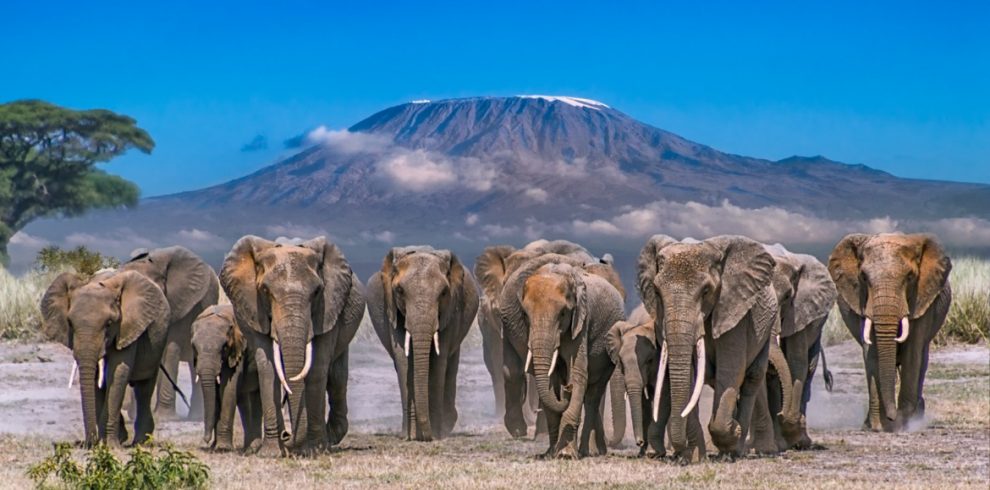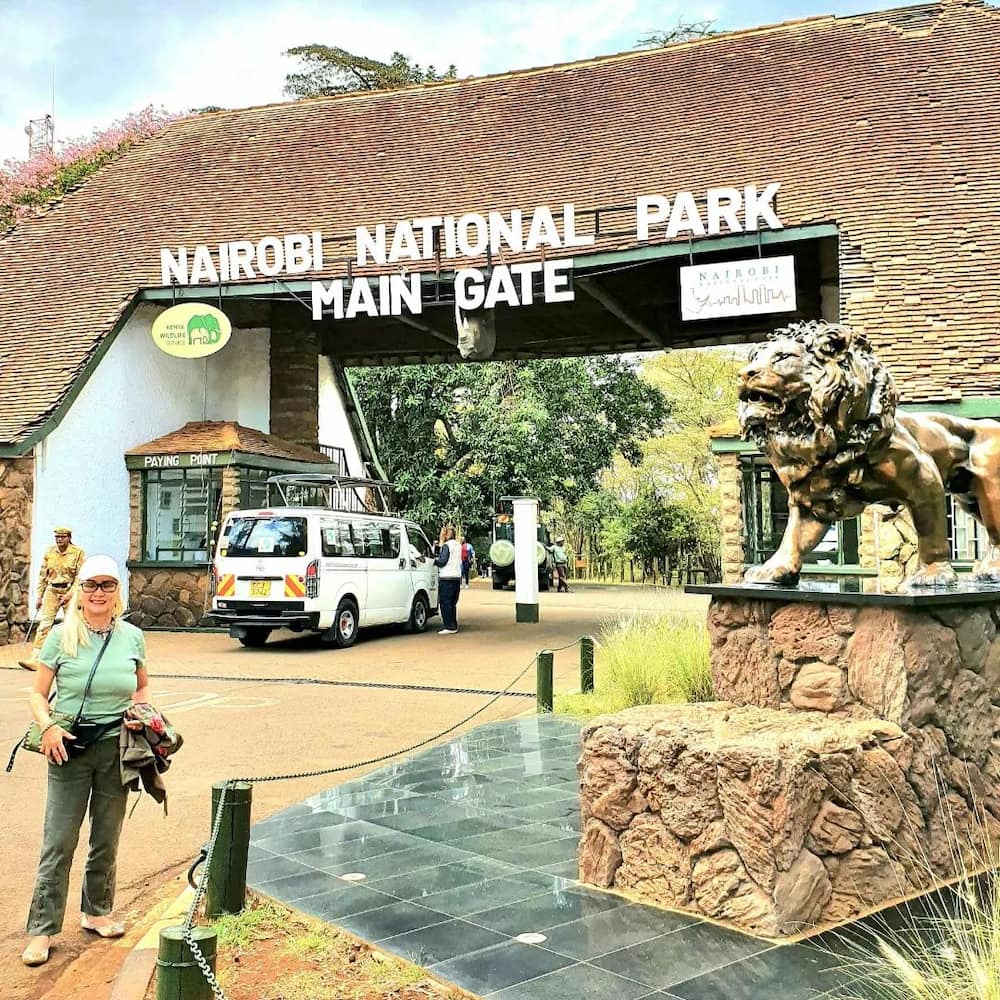After Mount Kilimanjaro, Mount Kenya National Park in Kenya is the second-highest summit in Africa. With a peak elevation of 5,199 metres and the moniker “Come touch the sky,” it was designated as a protected area in 1949. The Kenyan mountain, its fauna, and the nearby forest reserve are all included in the 715 square metre protected area. Many vegetation zones offer excellent habitats for different wildlife species, including birds and animals.
The park gets its water from the melting glaciers and mineral springs on the mountain. The park is home to rare and endangered wildlife species. The wildlife of the plains and the alpine vegetation have both adapted to the high altitude. While on safari with Kenya Wildlife, the tourists enjoy hiking the mountain, camping, and caving next to the wild glacier.
Before being designated as a national park that included both the forest reserve and Mount Kenya, the park was known as the forest reserve. Just one year after being named a UNESCO World Heritage Site in 1977, the entire region was designated as a UNESCO Biosphere Reserve in 1978. The Kenyan government established the park primarily to protect the region’s wildlife, beautiful scenery, and—above all—its water supply, which was vital to the local villagers.
Accessing Mount Kenya National Park
By car, Mount Kenya National Park is comparatively easy to get to—about 175 kilometres from Nairobi. Every day, numerous shuttles and public taxis use Nanyuki-Isiolo Road to travel to the Mt. Kenya region. Naro Moru is crossed by access points for the Nyeri-Nanyuki Road and the Sirimon Track.
Alternatively, Chogoria on Embu-Meru, 150 kilometres north of Nairobi’s capital, is the point from which the park is accessible. A private tour operator can arrange for a driver-guide to visit your Nairobi hotel. Even though it might be expensive, if it is organised by local operators, it will be simple for you and offer many additional advantages to the visitor, like safety and punctuality. Recall that, if you are using public transport, there are basically three roads that you should take in order to get to the park or to be dropped off close to the entrance.
Public transportation costs between 500 and 800 Kenya Shillings and drops you off on the main road. Hiring a special hire to get to the park gates will cost you between 2000 and 8000 Kenya Shillings, depending on how far the first taxi dropped you off. The four gates that lead into the Mount Kenya National Park are Burguret Gate, Themwe Gate, Marania Gate, and Kamweti Gate.
Additionally, domestic planes landing at Nanyuki Airstrip, the park’s closest airport, are allowed entry. At the airstrip, your driver-guide will be waiting for you. After that, in order for you to register and begin your day, he or she will drive you to the park entrance. Hiking is recommended for three to four days, depending on your level of fitness.
Vegetation of Mount Kenya National park
The park’s varied vegetation, which is brought about by height variations, accounts for variations in the vegetation zoning of Mount Kenya National Park. The vegetation in the park is separated into distinct zones that vary based on elevation changes. There is a dominant plant in each zone, and its adaptability to height determines which plant dominates the area. Remarkably, in addition to their original Kikuyu and Embu names, the majority of plant species at the Mountain have English names.
The rainy season in the park is influenced by the Indian Ocean from east to southeast. Compared to the relatively level areas surrounding the park, which are covered in open savannahs, the hills that receive a lot of rainfall are covered in dense growth of bamboo. The Kikuyu community in the area has now converted the open savannah land to agricultural land. Four classifications of vegetation exist: open savannah grassland, montane forest, bamboo, and afro-alpine zone.
Attractions of Mount Kenya National Park
Wildlife
At the Mount Kenya National Park, visitors can witness large African forest elephants, Cape buffalo, monkeys, leopards, Dik-dik, forest hogs, and numerous other species. Approximately 130 different species of birds can be found in the park, with woodland birds prevailing.
Mount Kenya
The second-highest mountain in Africa is the main draw of the park. The mountain covers about half of the park. Most people need more time, but technical experts can reach the peak in three to five days.
Mount Kenya National Park activities
The park provides a wide range of thrilling activities that enhance guests’ African travel experiences. Africa’s pristine wilderness can be experienced on a safari in the Mount Kenya National Park.
People are frequently misled by the park’s name into thinking that hiking is the only activity available there. As I mention in this post, the park offers a wide variety of activities.
Hiking

With seven different routes up the mountain, this is the main activity in the Mount Kenya National Park. Naro Moru is the busiest and easiest route out of the seven. Additional routes are the Timau Route, the Burguret Route, Sirimon, Chogoria, Batian, and Nelion.
Game viewing
Even though the park’s mountains are its most well-known feature, a variety of other animals, including buffalo and forest elephants, can be found there. The people who live in the Keny safari vans enjoy seeing animals. If they’re lucky, they might be able to spot the forest hog and leopards.
Birding
More than 130 different species of birds can be found in the park, with the majority of them being found in woodland settings and a lesser number in open savannah. Although they can be done at any time of year, birding safaris are most successful during the rainy season when the birds are nesting and breeding.
Scenic Views
Take in the magnificent scenery and vistas, particularly if you’re among the hikers who are unable to reach the summit of the mountain. Visiting the caves is just one more incredible experience that the Kenya Safari Tour offers.
Situated mere metres from the Equator, Mount Kenya National Park is dominated by Africa’s second-highest mountain.
visiting the burial place of Ngai, the former Kikuyu king. The people there still think that opening their doors and facing the mountain will bring blessings. For prayers and other customary ceremonies, the Kikuyu people make their way to the mountain’s slopes.



